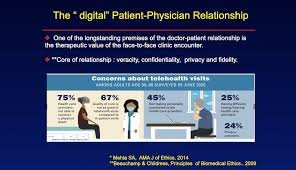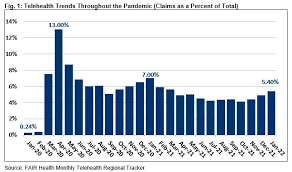Introduction to Authority Magazine Telehealth Best Practices
The rise of telehealth has transformed healthcare delivery, offering numerous benefits like enhanced access, convenience, and cost-effectiveness. However, for healthcare professionals and organizations to truly optimize their telehealth services, it is essential to follow best practices. One valuable resource for insights into the most effective telehealth strategies is Authority Magazine Telehealth Best Practices. This guide provides comprehensive advice on how to enhance telehealth services to achieve better outcomes for both patients and providers.
Table of Contents
Understanding the Impact of Telehealth
Telehealth has become a cornerstone of modern healthcare, allowing patients and healthcare providers to interact remotely. Whether it’s through video consultations, remote monitoring, or digital communication tools, telehealth has made healthcare more accessible and efficient. However, to maximize its effectiveness, it’s crucial to implement Authority Magazine Telehealth Best Practices that ensure a smooth and productive experience for all parties involved.
Why Authority Magazine Telehealth Best Practices Are Crucial
Adopting Authority Magazine Telehealth Best Practices allows healthcare professionals to streamline their processes and provide a better standard of care remotely. These practices include aspects such as privacy and security, effective communication, patient engagement, and leveraging technology in the right way. By following these guidelines, healthcare organizations can improve both their operational efficiency and the quality of care their patients receive.
Key Elements of Authority Magazine Telehealth Best Practices

- Ensuring Privacy and Security in Telehealth
One of the first and foremost aspects of Authority Magazine Telehealth Best Practices is maintaining the privacy and security of patient data. Healthcare providers must comply with regulations like HIPAA (Health Insurance Portability and Accountability Act) in the United States, which safeguards sensitive patient information during virtual consultations. Ensuring that telehealth platforms are secure is a non-negotiable part of best practices. These platforms should offer end-to-end encryption to prevent unauthorized access and data breaches.
- Choosing the Right Technology for Telehealth
Choosing the right technology is another crucial element in Authority Magazine Telehealth Best Practices. The platform should be user-friendly, reliable, and compatible with various devices. Providers should evaluate options based on their features, scalability, and ability to integrate with existing healthcare systems. Also, it’s important to assess the customer service and technical support options provided by the telehealth platform, ensuring that any issues can be resolved promptly to avoid disruptions in care.
- Training Healthcare Providers and Staff
A common challenge with telehealth is the initial lack of comfort or familiarity that healthcare providers may have with technology. Following Authority Magazine Telehealth Best Practices, organizations should ensure that all healthcare providers and staff are properly trained in using telehealth tools effectively. This training should cover everything from navigating the platform and troubleshooting technical issues to ensuring that the patient’s experience is seamless.
- Effective Communication with Patients
Clear and effective communication is another cornerstone of Authority Magazine Telehealth Best Practices. When interacting with patients remotely, it is crucial for healthcare providers to maintain the same level of attentiveness, clarity, and empathy as they would in person. Patients should feel comfortable asking questions and expressing their concerns during consultations. Providers should be proactive in offering educational resources and ensuring that patients understand their treatment plans.
- Patient Engagement and Satisfaction
Ensuring a positive experience for patients is central to the success of telehealth services. By incorporating Authority Magazine Telehealth Best Practices, healthcare providers can engage patients effectively, making them feel heard and valued. Personalizing the telehealth experience, maintaining a friendly tone, and providing clear instructions on how to use the technology are essential strategies for keeping patients engaged and satisfied.
- Maintaining Continuity of Care
Another aspect of Authority Magazine Telehealth Best Practices is ensuring that telehealth doesn’t disrupt the continuity of care. For patients with chronic conditions or ongoing treatment plans, maintaining consistent virtual check-ins can ensure that their healthcare needs are met. Providers should use telehealth to facilitate follow-ups, manage prescriptions, and monitor the patient’s progress, ensuring that the quality of care is sustained throughout the treatment process.
Incorporating Telehealth into the Healthcare Ecosystem
Integrating telehealth into the broader healthcare ecosystem is a vital step in achieving long-term success. Authority Magazine Telehealth Best Practices emphasize that telehealth should complement in-person visits, rather than replace them entirely. Hybrid models that combine both in-person and virtual appointments can offer patients a comprehensive healthcare experience that addresses their needs at every stage of their care journey.
Regulatory Compliance and Legal Considerations
Ensuring compliance with legal and regulatory frameworks is essential when implementing telehealth services. Authority Magazine Telehealth Best Practices guide healthcare organizations on navigating these challenges. This includes adhering to licensure requirements across state or national borders and understanding the specific rules governing telehealth in different regions. By staying up-to-date with evolving regulations, healthcare providers can ensure that their telehealth services are both effective and legally compliant.
The Future of Telehealth: Trends and Innovations
Looking to the future, Authority Magazine Telehealth Best Practices will continue to evolve as technology advances and patient expectations change. New innovations like AI-powered diagnostics, virtual reality, and remote patient monitoring are expected to play an increasing role in telehealth. As these technologies become more mainstream, healthcare providers will need to stay ahead of the curve, adapting their practices to maintain high-quality care and efficiency.
Addressing Challenges and Barriers to Telehealth Adoption
While telehealth offers numerous advantages, there are still challenges that providers must overcome. Issues such as limited access to technology in underserved areas, resistance from patients unfamiliar with virtual consultations, and the need for specialized training can slow down the adoption of telehealth services. Authority Magazine Telehealth Best Practices offer strategies to address these challenges, such as providing support for patients and providers during the transition, ensuring equitable access to technology, and fostering collaboration with tech companies to improve usability and access.
Telehealth and Patient Outcomes: Measuring Success

One of the key goals of implementing Authority Magazine Telehealth Best Practices is to improve patient outcomes. Measuring the success of telehealth services involves assessing both clinical and patient satisfaction outcomes. Metrics such as reduced hospital readmission rates, better management of chronic conditions, and patient retention can all indicate the effectiveness of telehealth services. By regularly collecting and analyzing this data, healthcare providers can make necessary adjustments and continuously improve the quality of care.
Telehealth’s Role in Expanding Access to Healthcare
One of the most significant benefits of telehealth, as highlighted in Authority Magazine Telehealth Best Practices, is its ability to expand access to healthcare, particularly for patients in rural or underserved areas. By eliminating geographic barriers, telehealth allows more patients to receive timely medical care, without the need for long-distance travel. This has the potential to greatly reduce healthcare disparities and improve health outcomes in communities that have historically been underserved.
Also read Decipher the Code ZPV BSF BXFTPNF: Unlocking the Mystery
Conclusion: Embracing Authority Magazine Telehealth Best Practices
Incorporating Authority Magazine Telehealth Best Practices into healthcare delivery is not just a matter of adopting technology—it’s about ensuring that technology serves patients, providers, and the healthcare system as a whole. By maintaining high standards of privacy and security, choosing the right technology, training staff, and engaging patients, healthcare organizations can create a telehealth environment that delivers high-quality care. As the telehealth landscape continues to evolve, staying informed about best practices and new innovations will be crucial to achieving long-term success.
In conclusion, Authority Magazine Telehealth Best Practices are indispensable for providers looking to enhance their telehealth offerings and deliver better care. By following these guidelines, healthcare organizations can ensure that they meet the needs of their patients while maximizing the benefits of telehealth.


